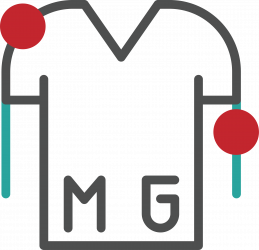Shoulder dislocation and instability are conditions that occur when the upper arm bone comes out of the socket of the shoulder blade, either partially or completely. This can happen due to injury or underlying structural abnormalities in the shoulder joint.
Causes of Shoulder Dislocation and Instability:
The causes of shoulder dislocation and instability can include:
- Trauma or injury, such as a fall or direct blow to the shoulder
- Repetitive overhead activities that strain the shoulder joint, such as swimming or throwing
- Structural abnormalities in the shoulder joint, such as loose ligaments or a shallow socket
- Previous shoulder dislocations or instability
Symptoms of Shoulder Dislocation and Instability:
The symptoms of shoulder dislocation and instability can include:
- Pain in the shoulder joint
- Swelling and tenderness around the joint
- A feeling of looseness or instability in the shoulder
- Limited range of motion in the shoulder
- A visible deformity or bulge in the shoulder
Diagnosis of Shoulder Dislocation and Instability:
I can diagnose shoulder dislocation and instability through a physical exam and imaging tests such as X-rays, MRI or ultrasound. During a physical exam, I will check for tenderness, range of motion, and any visible swelling or deformity in the shoulder joint. Imaging tests can confirm the diagnosis and determine the extent of the dislocation or instability.
Treatment of Shoulder Dislocation and Instability:
Treatment for shoulder dislocation and instability depends on the severity of the condition. Mild cases may be treated with rest, ice, and pain medication. More severe cases may require a combination of treatments, such as:
- Immobilisation: wearing a sling or brace to immobilise the affected arm and allow the joint to heal
- Physical therapy: exercises to help maintain range of motion and strength in the shoulder joint
- Surgery: if other treatments do not provide relief, surgery may be necessary to repair or stabilise the shoulder joint.
Recovery from Shoulder Dislocation and Instability:
Recovery from shoulder dislocation and instability depends on the severity of the condition and the type of treatment received. Mild cases may resolve with rest and physical therapy, while more severe cases may require surgery and rehabilitation. Most patients are able to manage their symptoms and return to their normal activities with appropriate treatment.
In conclusion, shoulder dislocation and instability are conditions that can cause pain, instability, and limited range of motion in the shoulder joint. If you suspect you have shoulder dislocation or instability, it is important to seek medical attention promptly to receive an accurate diagnosis and appropriate treatment. With proper treatment and rehabilitation, most people are able to manage their symptoms and maintain their shoulder function.
